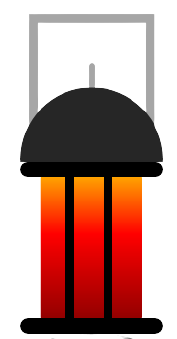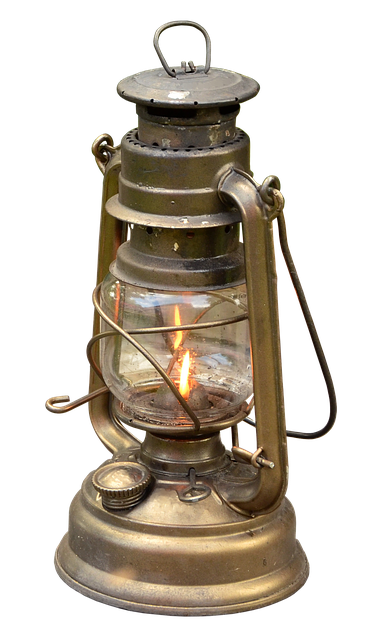BestHurricaneLantern is reader-supported. We may earn a commission through products purchased using links on this page. Learn more about our affiliate disclosure
How to clean Coleman lantern? The portable lantern invented by William C. Coleman in 1914 is the company’s base. Much of America was still without electricity during those years.
The Coleman lantern is still a staple at campsites and outdoor workplaces after more than 40 million units have been sold, and the company continues to manufacture more than a million each year.
Coleman lanterns are also available in a variety of sizes and can be used with either propane or unleaded gasoline. Its dual-fuel lanterns, for example, are designed to run on either unleaded gasoline or a special fuel for stoves and lanterns.
The gentle hissing sound of the lantern hasn’t changed. People alone in the woods or out with their family feel comforted by that sound when it’s unbelievably dark.
The most critical job when using the lantern is to clean the lamp. Regular cleanings have many advantages which are mentioned as below.
Table of Contents
Benefits of Cleaning of the Lamp
Lanterns may usually be cleaned with warm water and dish-washing soap, then dried before being stored. Although there is no fixed cleaning schedule for your lantern, you can clean it whenever it becomes dirty before storing it at the end of the camping season.The benefits of regular cleaning of the lamp is listed below.
- Improved fuel economy
- Flame control,
- Absence of rust or corrosion.
If you are looking for Coleman lanterns, you can read our buying guide on Coleman lantern
Parts of Coleman Lantern
The parts of the Coleman lantern that must be cleaned are as follows:
- Porcelain Enamel
- Glass
- A painted fount or tank
- A nickel plated fount
- Bare metal
How To Clean Coleman Lantern?
It’s crucial to know how to clean the lantern. Through using the incorrect process or chemical cleaners, you risk destroying the integrity and/or functionality of your Coleman Lantern.
It’s important to remember that cleaning individual parts is easier than cleaning an entire lantern. It is possible, however difficult, to clean the inside of a bare metal lantern frame that is still fixed on a painted fount.

The following are brief explanations of how to clean the different sections of the lantern.
Cleaning of Porcelain Enamel
The lantern’s ventilator is made of steel that has been porcelain enamelled. It is difficult to paint and is easily scratched.
To clean it, use warm soapy water and a soft cloth or sponge. Using an abrasive scrubber or solvent to avoid scratching the surface and destroying the lustre.
Cleaning of Glass
Lamp shades and lantern globes can be cleaned with warm soapy water and a soft rag. Abrasive scrubbers should be used with caution.
If there are any stains on the bottle, use a plastic knife or your fingernail to try to remove them. If your globe has a white fuzzy mark on it, it will not come out.
They’re caused by a lantern with a hole in the mantle being used. Sulphamic acid known as Lime-Away will help you get rid of dark spots that won’t come off with soap and water.
Acids have the potential to cause burns. Before using, please use caution and read the manufacturer’s warning labels. Don’t forget to use rubber gloves and coat the globe inside out. Don’t drop the glass because it will become extremely sticky. Allow 15 minutes for it to function. Take care because the glass can become slick. Rinse it well and pat it dry with a soft towel.
Cleaning of painted fount or tank
You should handle the paint on a lantern fount or tank in the same way you would a car’s paint job. Allow it to soak for a few minutes after spraying it down with a good household cleaner . Then wipe the dirt and grime off the paint with a damp cloth. If your lantern has a decal on it, be cautious because the lettering can easily be removed.
The pump cylinder must be cleaned. To clear the old oil and dirt from the cylinder, spray carburetor cleaner directly into the cylinder and scrub with a rifle bore brush or similar.
Spray the cleaner up into the cylinder to remove the odour after turning the fount upside down to drain the spray. Repeat until the cylinder walls of the pump are smooth to the touch. And use an automotive rubbing agent if the paint is badly oxidised.
To make the rubbing compound easier to spread, spray a little cleaner into it, then rub the fount/tank like you would your vehicle. Remember not to rub this on the decal.
Remove the rubbing compound with a clean, dry rag when done. If it dries and becomes impossible to extract, use cleaner to loosen it up again. Finally, for a good shine, you can use car wax. Remove the wax from an imprinted logo on the fount with a gentle toothbrush. Remember to stay away from the decal.
Cleaning of nickel plated fount
Nickel plates can corrode over time. A lamp or lantern that has sat in a filthy, damp atmosphere for 50 years can be a total disaster.
Unless the plating has been eroded by water or chemicals, it can normally be restored to a gleam with a little elbow grease. Begin by doing a thorough cleaning.
Enable it to soak for a while after spraying it with a good household cleaner like Simple Green. Remove as much dirt and grime as possible with a soft brush and a clean rag. If the nickel’s bright lustre has faded and it seems hazy, white vinegar (acetic acid) works well to restore it.
Vinegar will also help you get rid of some of the dark places you’ll come across. One should clean nickel with a terry cloth rag because it has a stronger abrasive action than an old tee shirt or a soft cotton rag.
Dip the rag in the vinegar and wipe the fount clean. continue rubbing in a circular motion with the wet rag, starting at the top and working your way down. Look for dark spots and try to remove them with your fingers.
After you’ve done washing, give the fount a hot rinse to remove the vinegar. To finish the shine, use a metal polish and a soft rag. You will need to use a stronger acid if the nickel plate does not shine at all and feels very rough to the touch.
Lime-Away (sulfamic acid) is my preferred cleaner since it is gooey, sticks to vertical surfaces well, and is less irritating than cleaners containing hydrochloric acid. If you leave Lime-Away on for too long, it will eat the nickel plate. If you plan to use this approach to clean nickel, keep in mind that it is not without risks which are listed as follows:
- Painted surfaces would be harmed. If you’re going to use it near paint, disassembling it first. Since the handle on nickel-plated Coleman lamps is painted wood, this may be the case. Before cleaning the burners, it is best to remove them and then treat them.
- In the vast majority of cases, brass is the underlying metal. If the fount has yellowish metal spots on it, the nickel has been lost. When you clean the dirt and grime out of dark spots, they will often reveal plate loss.
Apply a sufficient coat of cleaner to a small area at the bottom of the fount. Allow 5 minutes for it to sit before gently rubbing it with a wet rag. It should be thoroughly cleaned with warm water.
The small spot should now feel cleaner and have a gleam to it. Unless you notice that some of the nickel has been lost, try it again in the same place and soak for another 5 to 10 minutes.
Using the same technique to clean the entire fount until you have a cleaner finish and a hint of shine. To finish the shine, use a metal polish and a soft rag.
Cleaning of bare metal
Your lantern frame will most likely be rusted, and the brass parts of the burner/valve assembly will be blackened from years of heat and oxidation.
Cleaning bare metal is difficult, but it is worthwhile. When the appliance is disassembled, this is much easier to do. Rust and grime from steel can be removed with vinegar (acetic acid) and salt, as can much of the black soot from brass.
Use a 1 cup vinegar to 1 tablespoon salt ratio and get the mixture to a near-boiling temperature. Submerge the items you want to clean completely in water and soak them for an hour or more. After soaking, rinse them in warm water and wash them well with a brass or very stiff brush.
It’s important to remember that you should never immerse a valve assembly in vinegar or some other cleaning solution.
There is at least one graphite packing that could be ruined inside. Brush vinegar on a valve and keep the metal wet to clean it. You simply do not want the acid to reach the packing.
Review the findings and make any possible adjustments. Apply a light oil, Vaseline or WD-40, and 0000 steel wool to finish the washing.
Naval jelly is a faster way to clean rusted metal and dirty brass (phosphoric and sulfuric acid). It’s sticky and adheres to vertical surfaces like the struts on lantern frames. It also takes half the time that vinegar takes. Spread it over the sections you want to clean with a toothbrush, but bear in mind that it will destroy the color.
Read more about how to clean Coleman lantern
Conclusion
Cleaning your camping lantern is a lot less difficult than you would imagine. Wipe down the outside of the globe and the globe with warm water and dish soap first.
This will save you money on petrol, give you better control over your flame, and keep rust and other corrosion at bay.
All you have to do now is carefully remove the globe (glass covering) and wash it in soapy water. If your lantern is a collectible Coleman lantern, be particularly careful not to scrub it too hard and remove the logo, as this will reduce its value.
If you have a new or old lantern, a clean globe will increase the brightness of your lantern when you go camping.

Hey! I’m James Miller, author of BestHurricaneLantern website. I’m an outdoor camping enthusiast and lantern is foremost thing every camper must know. I’ve started this blog few years ago to help you find out your Best Hurricane Lantern.

